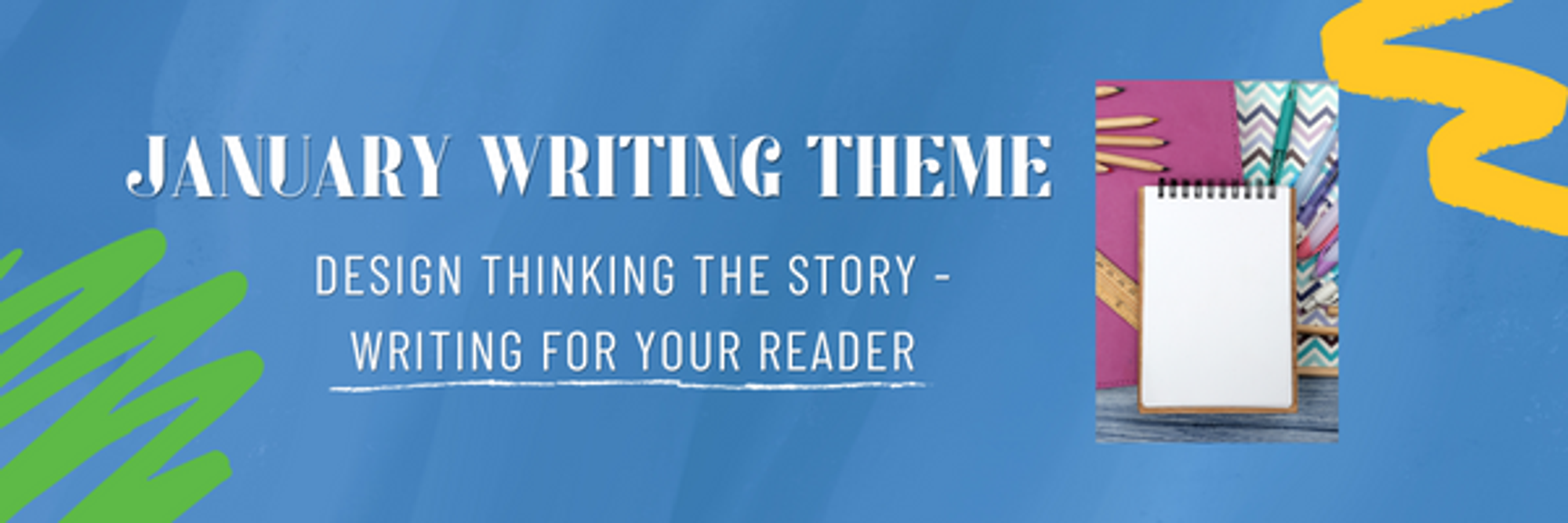
🎲 “Design Thinking the Story - Writing for Your Reader”
Join us on Wednesday, January 24, 2024, at 4:00 pm (PT)/7:00 pm (ET), for our live Spilling Ink Event: “Design Thinking the Story - Writing for Your Reader”. We will discuss different ways on how to engage our readers.
How do you know that your story will reach your audience? How do you know it’s what they are looking for? Design Thinking is the ideal lens for addressing these questions.
Originally conceptualized to help designers think about how best to develop their products, this method lends itself perfectly to the writing process! It outlines the sequence necessary for developing a “product” (aka your story) by way of getting to know your “user” or reader, identifying the “problem-to-be-solved” or “the user’s need,” and designing different drafts or versions of the product to try and solve the issue.
Here’s the six-step process: “Design Thinking Your Story”
Step #1: “Empathize” - In writing, your user is the reader, so this stage focuses on your audience, as well as the tone of the content you plan to write. Who is your audience?
- Who will be reading this?
- Where and when will they be reading it?
- Why will they be reading it?
- What do they want to get from it?
Step #2: “Define” - Next, you must define the problem your writing will solve for your readers. In other words, what will your topic be? What purpose do you have for writing it, and how much depth is needed?
- What is it about?
- What do you want it to achieve or answer for your readers?
- How much info is needed to do that?
What form should the text take?
Step #3: “Ideate” - The more outside-the-box ideas, the better. In writing, this is your chance to come up with all the possible approaches to and ideas about what you have to say. Get as many ideas as possible recorded before you begin picking and choosing the best for the text you are writing.
Step #4: “Prototype”- Otherwise known as “drafting.” This is the most important stage in your writing, and yet it is so often skipped over. That’s one reason Design Thinking can be so valuable — get a bare minimum version of your product and try it out before you spend hours or days or weeks perfecting it.
The more iterations your work goes through, the more your readers will benefit from your writing.
Step #5: “Test”- It is time to test out your product. You should be the first tester - reading your own work from end to end, from the perspective of a reader, not as the writer and without stopping too often to take notes or make any edits. Then, revise, make necessary edits, and proofread your work. Next, have others “test” out your product and gather feedback and observations. This might not be an entire story, from beginning to end, but it could be samples to find out how readers feel about dialogue, character interactions, clarity of language, complexity vs simplicity of plot, etc. Once your testers have finished, revise, make necessary edits, proofread and repeat.
Step 6: “Iterate” - This is the final and most important step, where you apply what you’ve learned from the process and make changes to improve your product or story. Though it may seem strange at first, the more questions and feedback you receive the more beneficial the Design Thinking process is for you.
Now, let’s try this out for real!
For all of our live sessions, we use the same Zoom link:
https://us02web.zoom.us/j/84521251027
Can't attend the session live?
Not to worry! We'll post the replay here and in our discussion area so that you can watch and join the ongoing conversation.
